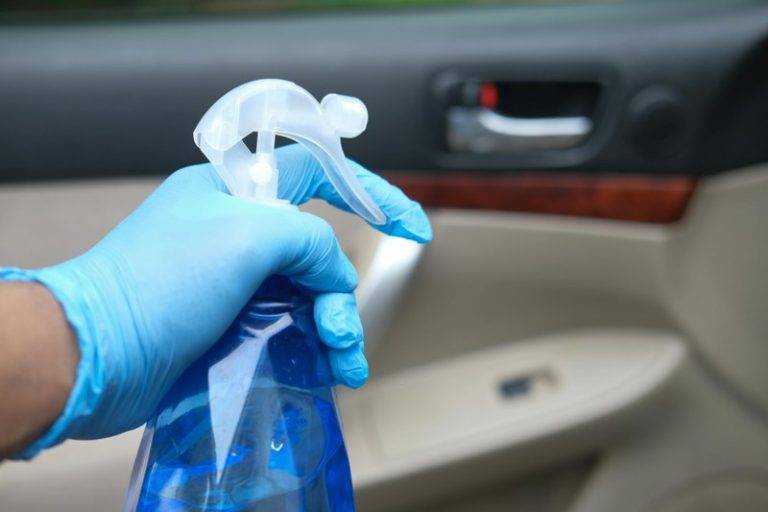How to Cover a Broken Car Window from Rain?

Dealing with a broken car window is both inconvenient and stressful. Whether due to an accident, break-in, or unexpected debris, a broken window leaves your vehicle vulnerable to rain, wind, and potential damage to the interior. This guide will walk you through practical steps to quickly and effectively cover a broken car window, helping you protect your car until a professional repair can be arranged.
In This Article
Why Covering a Broken Car Window is Essential
H2: Importance of Covering a Broken Car Window
- Protects Against Water Damage
- Water can seep into your car, damaging upholstery and electrical components and potentially causing mold growth. Covering the window helps to avoid these costly repairs.
- Secures Against Debris and Intruders
- A broken window opens your car to debris, pests, or even unauthorized entry. A temporary cover creates a barrier, offering security until the window is fixed.
- Maintains Climate Control
- Uncovered windows can let in cold, hot, or humid air, leading to discomfort and affecting the internal temperature, which can strain your car’s air conditioning or heating systems.
Preparing to Cover a Broken Car Window
H2: Essential Supplies for Covering a Broken Window
- List out essential supplies:
- Clear plastic garbage bags or plastic sheeting
- Heavy-duty duct tape
- Scissors
- Microfiber or paper towels
- Gloves and safety goggles for broken glass
H2: Safety Precautions Before You Begin
- Emphasize wearing gloves and goggles.
- Clear all loose glass pieces around the window and surrounding areas.
- Ensure the car interior is dry before applying any covering.
Step-by-Step Guide on How to Cover a Broken Car Window
H2: Step 1 – Clean the Area Around the Window
- Use gloves and a damp cloth to remove any visible shards of glass. To prevent injury, inspect the seat, dashboard, and floor for loose glass.
H2: Step 2 – Dry the Window Frame
- Dry the area with a microfiber towel or paper towel. Moisture can affect the adhesive of the duct tape or plastic sheeting.
H2: Step 3 – Measure and Cut the Plastic Covering
- Measure the plastic sheeting or garbage bag to fit the window. To ensure complete coverage, cut a piece slightly larger than the window opening.
Attach the Plastic Sheeting to the Window Frame
- Use duct tape to attach the plastic covering around the window’s edges. Ensure each corner and edge is securely taped down, and apply a second layer of tape for extra protection.
H2: Step 5 – Reinforce the Covering for Rain Protection
- Place extra strips of duct tape along the edges and the middle of the plastic sheeting for a tighter seal. If needed, add another layer of plastic for added durability.
H2: Step 6 – Test for Security and Adjust as Needed
- Once secured, gently tap the plastic covering to ensure it is firmly in place. Adjust as needed, particularly if air or water could seep through.
Common Mistakes to Avoid When Covering a Broken Car Window
H2: Mistakes to Avoid When Temporarily Covering a Car Window
- Using Thin or Weak Materials
- Opt for heavy-duty plastic or garbage bags. Thinner materials can tear or puncture, especially in harsh weather.
- Skipping the Cleaning Step
- Dirt and moisture weaken the tape’s adhesion, making the covering less effective.
- Not Securing the Plastic Tightly
- Loose coverings may flap in the wind, causing noise, reduced protection, and potential water leakage.
Additional Tips for Temporary Car Window Covers
H2: Alternatives to Plastic Sheeting and Duct Tape
- Using Cardboard
- Cardboard can work as a last-resort alternative but is not recommended for rainy weather, as it absorbs water and weakens over time.
- Cling Film or Saran Wrap
- Cling film provides a quick fix for smaller windows or cracks. It’s useful for short trips but should be reinforced with duct tape if used as a primary covering.
H2: Can You Drive with a Temporary Window Covering?
- Local laws may vary, but in most cases, limiting driving distances with temporary covers is advisable, as visibility and safety are compromised.
Long-Term Solutions and Repair Options
H2: Professional Repair Options for Broken Car Windows
- Full Glass Replacement
- Discuss the benefits of visiting an auto repair shop for a glass replacement and the types of car insurance that may cover it.
- Mobile Glass Repair Services
- Many companies offer mobile repair services, a convenient option if you cannot drive due to a damaged window.
H2: Cost Considerations and Insurance Claims
- Provide a general cost range for repairing broken car windows and the process for filing insurance claims, including comprehensive coverage options.
Frequently Asked Questions (FAQs)
H2: FAQ on Covering a Broken Car Window from Rain
- How long can I keep a temporary cover on a car window?
- Temporary covers are best kept for a few days to a week, as they are not durable enough for long-term use. Get a professional repair as soon as possible.
- What if my temporary covering falls off during heavy rain?
- Reinforce it with additional duct tape or layers, and ensure the car interior is dry before reapplying.
- Can I use a tarp as an alternative covering?
- Yes, a tarp can provide strong protection; just cut and secure it properly.
Conclusion:
Covering a broken car window may not be an ideal solution. Still, with a few household materials and careful application, you can protect your vehicle from rain and debris until a more permanent repair is completed.
Remember, safety and thoroughness are key. By following these steps, you can rest assured that your car will remain secure and dry until a replacement is available.






